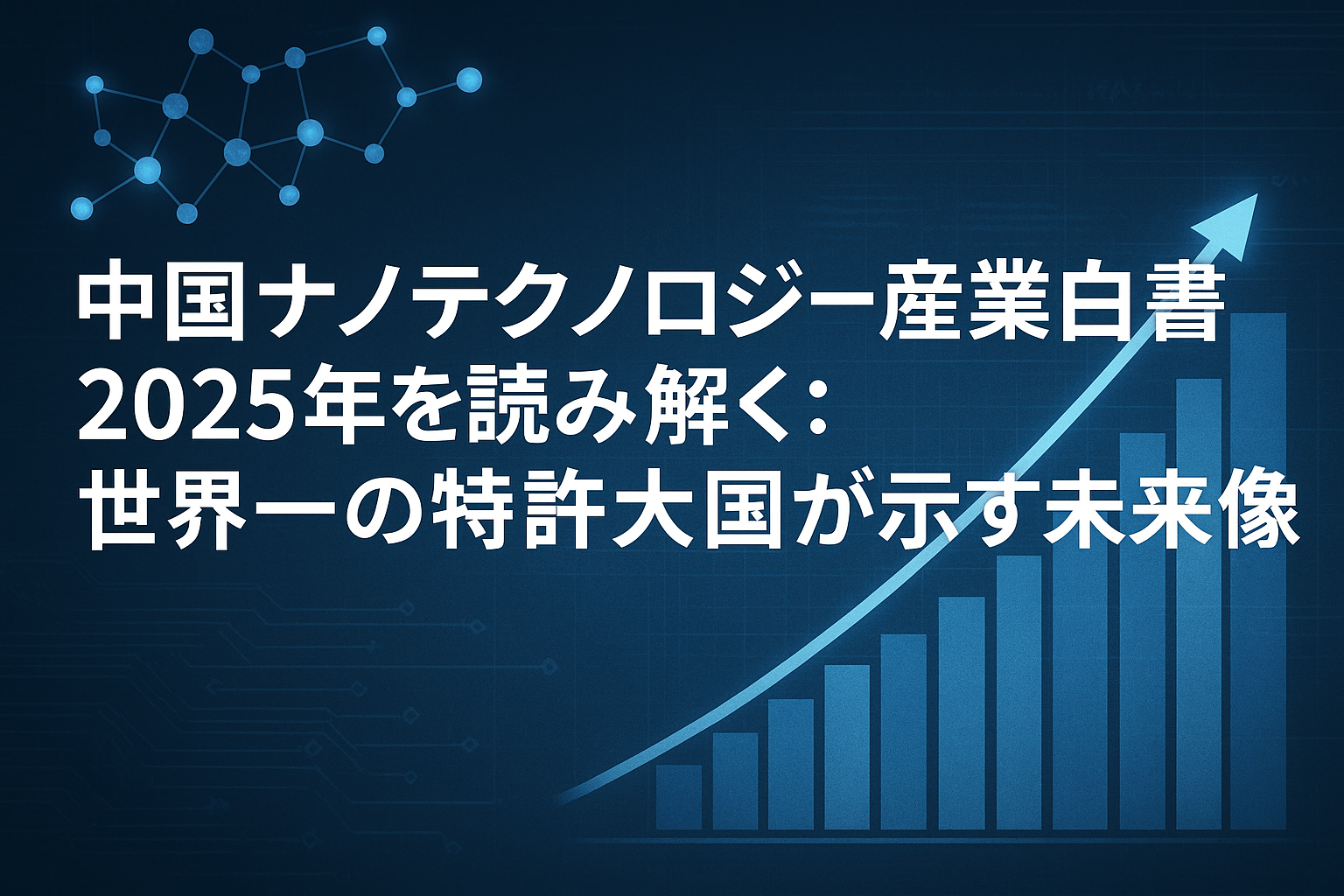Overview
The China Nanotechnology Industry White Paper (2025), released at the 10th China International Conference on Nanoscience and Technology, revealed that China has maintained its position as the global leader in the number of nanotechnology patents. From 2000 to 2025, more than 1,078,000 nano-related patents have been granted worldwide, with China accounting for 464,000, or 43% of the total. Furthermore, the fact that the proportion of technology transfers and licensing has exceeded 8% demonstrates that research outcomes are increasingly being translated into industrial and market applications at a steady pace.
Background of China’s Nanotechnology Patent Advantage
China’s prominent position in the nanotechnology field stems from consistent national-level investment in science and technology. Long-term and stable funding, exemplified by programs such as the “National Key Project on Nanoscience,” has supported research and development. In addition, the close collaboration between domestic universities, research institutes, and enterprises—and the institutional framework that promotes the patenting of research results—has been a crucial factor.
Current Status of Industrialization and Technology Transfer
What stands out is not only the sheer volume of patents but also the rising “conversion rate of outcomes.” The fact that licensing and transfer rates of patents have surpassed 8% indicates that the foundation for moving beyond laboratory research into practical industrial applications has been strengthened. In fields such as nanomedical materials, energy storage devices, and advanced semiconductor processes, commercialization and international expansion are already underway, signaling China’s shift from being a “nation of knowledge production” to a “nation of technology implementation.”
International Implications
The conference featured keynote speeches from seven of the world’s leading scientists and interdisciplinary discussions involving more than 600 scholars. As noted by Academician Bai Chunli, who chaired the event, nanotechnology is a “convergent domain” that intersects physics, chemistry, materials science, and life sciences. This interdisciplinarity is a source of innovation, and China’s initiatives could drive global research trends. At the same time, the concentration of patents raises concerns about its impact on technology standardization and the shaping of international rules—developments that warrant close attention from Europe, the United States, and Japan.
Future Prospects
While China’s dominance in nanotechnology patents is expected to continue for the foreseeable future, the real test lies in “creating social impact.” How nanotechnology will be applied to address pressing challenges such as the energy crisis, climate change, and super-aging societies remains a critical question. The answer will be reflected not merely in the number of patents but in international collaboration and industrial deployment. China’s leadership in shifting toward a “nano society” could usher in a new era of technological competition while also opening opportunities for global co-creation.

